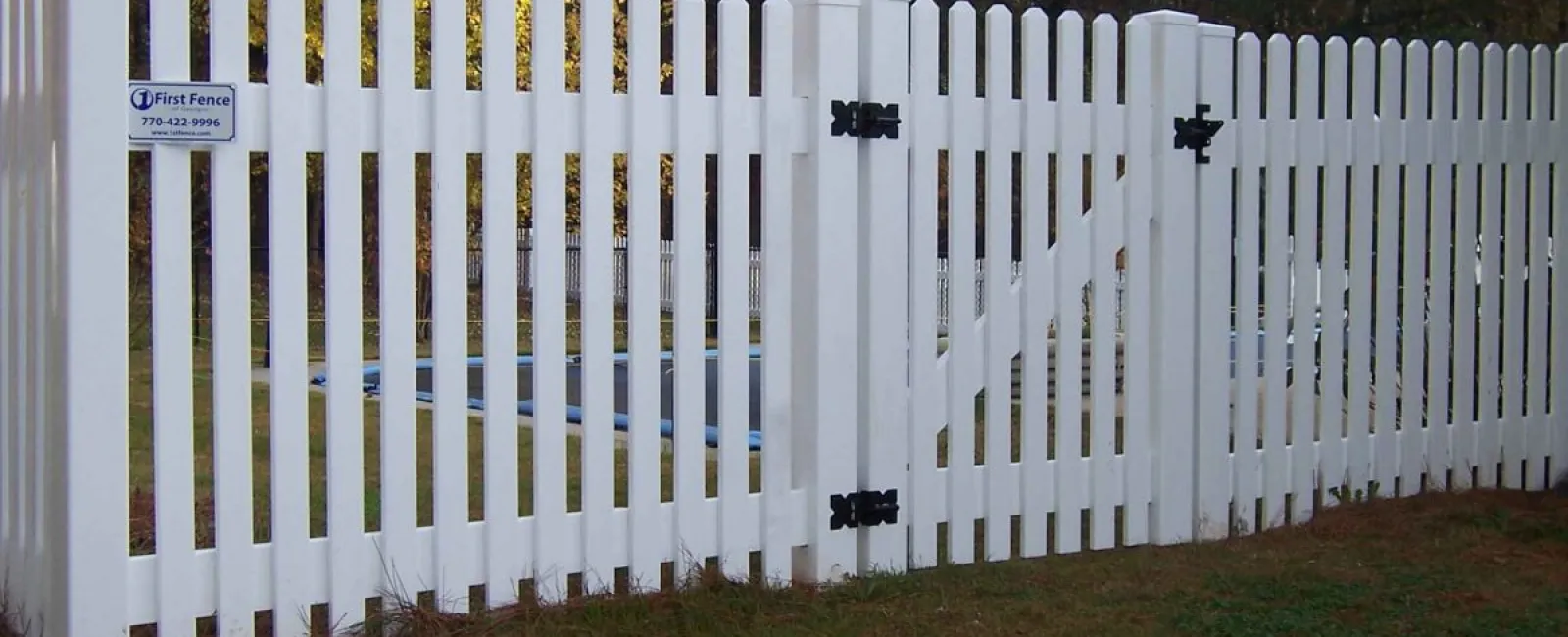First and foremost, fences serve a practical purpose. They set boundaries, keep kids and pets safe, and protect property from intruders. However, the white picket fence is more than a simple boundary marker. It’s an iconic symbol of the American Dream.
How the White Picket Fence Became Synonymous with Prosperity
Picket fences date back to the time when colonists first settled what is now the United States. Because the land was undeveloped, people wanted to mark the property they claimed as their own. They also wanted to protect their homes and settlements from the Native Americans, with whom they sometimes fought.
Wood was an abundant resource, so they used it to build fences. Those fences most often featured boards with pointed tops, or pickets. This design stemmed from military fortifications in Old Europe and was meant to provide protection.
As time went on and settlements grew into cities, mass production made fence parts both fancier and easier to obtain. Picket fences, washed with a lime mixture to give them their white color, became popular from New England to Key West. They eventually became a sort of visual shorthand for “the good life” to be found in the U.S.
What’s the Best Material for a White Picket Fence?
While fencing has come a long way over the years, many people still enjoy the tradition and hominess of this traditional American fence type. Entire neighborhoods advertise as throwbacks to the good old days, with a white picket fence in every yard used as a major selling point.
However, because fencing has come a long way, those fences aren’t always wooden. The availability of different fencing materials offers homeowners several additional choices including PVC, aluminum and composite.
Wood
The traditional choice, wood is economical, easy to install, and highly customizable. For increased durability, use pressure treated pine, cedar or cypress.
PVC
Made from polyvinyl chloride, PVC is a durable, cost-effective and weather-resistant material. PVC fences are typically very low maintenance.
Aluminum
Offering a slightly different look with thinner pickets, aluminum fences offer low-maintenance durability and increased strength and security. The panels are also rackable, meaning they’re easier to install on slopes.
Composite
Made almost entirely from recycled wood fibers and plastic polymers, composite is an environmentally friendly choice. It’s also long-lasting, durable, and requires very little maintenance.

How Much Space Should Be Between Fence Pickets?
Many white picket fence options come with pre-made panels. However, if you’re building a fence from scratch, you may wonder about proper picket spacing.
There are several factors to consider:
- Aesthetics
- Functionality
- Privacy vs. visibility
- HOA or other local guidelines
Two and a half inches (2 ½”) between pickets is the standard measurement for most white picket fences. However, they can be placed closer together or further apart, depending upon your needs.

Is a White Picket Fence Right for My Property?
White picket fences are enduringly popular for a reason, but they don’t fit every need or aesthetic. If your property requires greater privacy or security, a traditional picket fence may not be ideal. Similarly, if your design aesthetic is modern, another fence design type might be better suited.
White picket fences enhance the following types of properties:
- Traditional single-family homes
- Historic properties
- Seaside cottages
- Landscapes with rose or flower gardens
- Businesses with homey or garden-related branding
White picket fences are also well-suited to front yards. Their open nature creates a boundary while allowing for visibility. This helps your home appear charming and welcoming, increasing curb appeal.
If you’re a gardener, there is no better choice than a white picket fence for showing off your landscape. Perfect for rambling roses and other flowering vines, the pickets make a perfect trellis. They’re also a natural backdrop for hydrangeas, lavender, sunflowers, and other garden favorites.
White picket fences are typically associated with neighborliness. With backyard barbecues and apple pie. If you’re looking to create a friendly, casual, and traditional vibe for your property, a white picket fence is a great choice.

Is a White Picket Fence Suitable for Dogs?
If you’re a dog owner, you may be wondering if a white picket fence will contain your pup. The answer depends upon your dog (or dogs.)
If the pickets are spaced close together, they will be sufficient to keep smaller dogs in. If your dog tends to dig, it might be wise to plant small bushes along the perimeter to deter them from digging under. You can also line your fence with woven wire mesh to prevent escape.
For larger breeds, the effectiveness of your fence depends on the height and your dog’s willingness or ability to jump. Some picket fences are shorter than others, especially in front yards where they’re used for decoration. If keeping your dog in is a concern, consider building a taller fence. Standard picket fence heights range from 36-48 inches, or 3-4 feet.

Partner With a Fencing Professional
If you’re considering installing a fence on your property, First Fence of Georgia can help. We have almost twenty years of industry experience in building the best possible fence for our customers. Whether it’s a white picket fence or any other type of fencing, we will do it right from the ground up. Contact Us today for all of your fencing needs.


